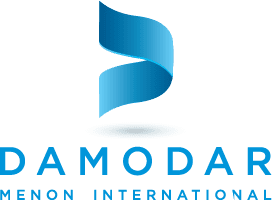This blog explains the difference between weft and warp knitting to yarn manufacturers in India. Knitting is a popular fabric manufacturing technique that interlocks yarns in lengthwise or width-wise directions. The yarns are interloped from one direction only, however, either horizontally (weft knitting) or vertically (warp knitting).
A knitted fabric has one essential fundamental – the loops. This makes the fabric stretchy and elastic in any direction, unlike woven fabrics. The elasticity is derived by the number of loops per square inch. The loop that runs lengthwise is called wale and corresponds to the Warp direction, and when the loop runs across the fabric, it is called a course, which corresponds to the Weft direction.
If you are one of the budding textile companies in India or an investor for any viscose and polyester yarn manufacturers in India, you must know the difference between Weft and Warp knitting.
Warp Knitting
The warp knitting process creates lengths of loops in the vertical direction of the fabric, where more than one yarn is fed into the machine vertically to create a tightly knit, less stretchable fabric. The loops are interloped row by row, producing a strong and stable fabric material.
Warp knitting produces a vertical pattern fabric, where each loop is created from separate lengthwise yarns. More elaborate fabrics can be produced with the warp knitting method. Example: Crochet.
Weft Knitting
Weft knitting is the most common type of knitting, in which the fabric is formed with connected loops of yarn in the horizontal direction. A single long thread of yarn, called a Weft, is threaded in the knitting machine. The loops are created in a zig-zag pattern, unlike the straight vertical line of the wale in Warp knitting. Weft knitting can be produced in both circular and flat knitting machines. Example: Sweater.
NOTE: If you are looking for cotton buyers, viscose, or polyester yarn manufacturers in India for knitting yarn, contact DMI experts and get the best deals online and offline.
Or you can also register at TEXchange Global, the world’s leading textile trading platform for greige yarn manufacturers in India and worldwide.
For more information, visit the TEXchange website.
Difference Between Warp and Weft Knitting Process
The main difference between Warp and Weft knitting is the direction in which the yarn loops are formed. And the difference in loop formation has a major impact on the quality, elasticity, appearance, and uses of the knitted fabric.
Weft Knitting |
Warp Knitting |
| Only one set of yarn is used to form weft knitted fabric. | Many yarns are used to form a warp-knitted fabric. |
| Each needle loop has its own threads. Needles can go upto thousands, depending upon the size of the machine. | |
| The stitches in the face of the fabric look vertical, with a textured appearance.
And the yarn is looped in a zigzag pattern. |
The stitches on a weft fabric look vertically straight with a distinct V shape line running across the interlocks. This gives a uniform appearance.
The yarn is looped in the widthwise direction. |
| The production rate is lower. | The production rate is higher than weft knitting. |
| Weft knit fabrics have low dimensional stability and can stretch and recover easily. | Warp knit fabrics have dimensional stability equivalent to woven fabrics. |
| They are susceptible to snagging. | Since they do not run, they do not snag.
They are more durable in comparison. |
| Needles move in a circular direction in the machine. Needles move alternatively. | Needles on the board move in up and down directions. Needles move simultaneously. |
| Designing on Weft knit is complex. | Creating patterns and designs through Warp is easy. |
| Suitable for forming thin and lightweight fabric. | Used for producing coarse fabric. |
| Examples and Applications:
Used for Stretch and Comfort. Jackets, suits, t-shirts, stretchable and airy sports garments, seamless hosiery, highly textured fabrics, hats, scarves, and a wide range of metal fabrics for cars and industrial use. |
Examples and Applications:
Used for Stability, Strength, and Durability. Lightweight fabrics for innerwear (tricot knit) such as camisoles, panties, brassieres, etc., sportswear and leisure wear, furnishing, mattresses, mosquito nets, household produces, car cushions, lining etc., medical gowns, PVC, caps, gloves, and fabrics for printing and advertising. |
The choice between Warp and Weft knitting techniques totally depends on the top textile companies in India’s definitive usage and properties required for the fabric. Presently, there are different yarn manufacturers in India for weft and knit machines as the demand is growing worldwide.
